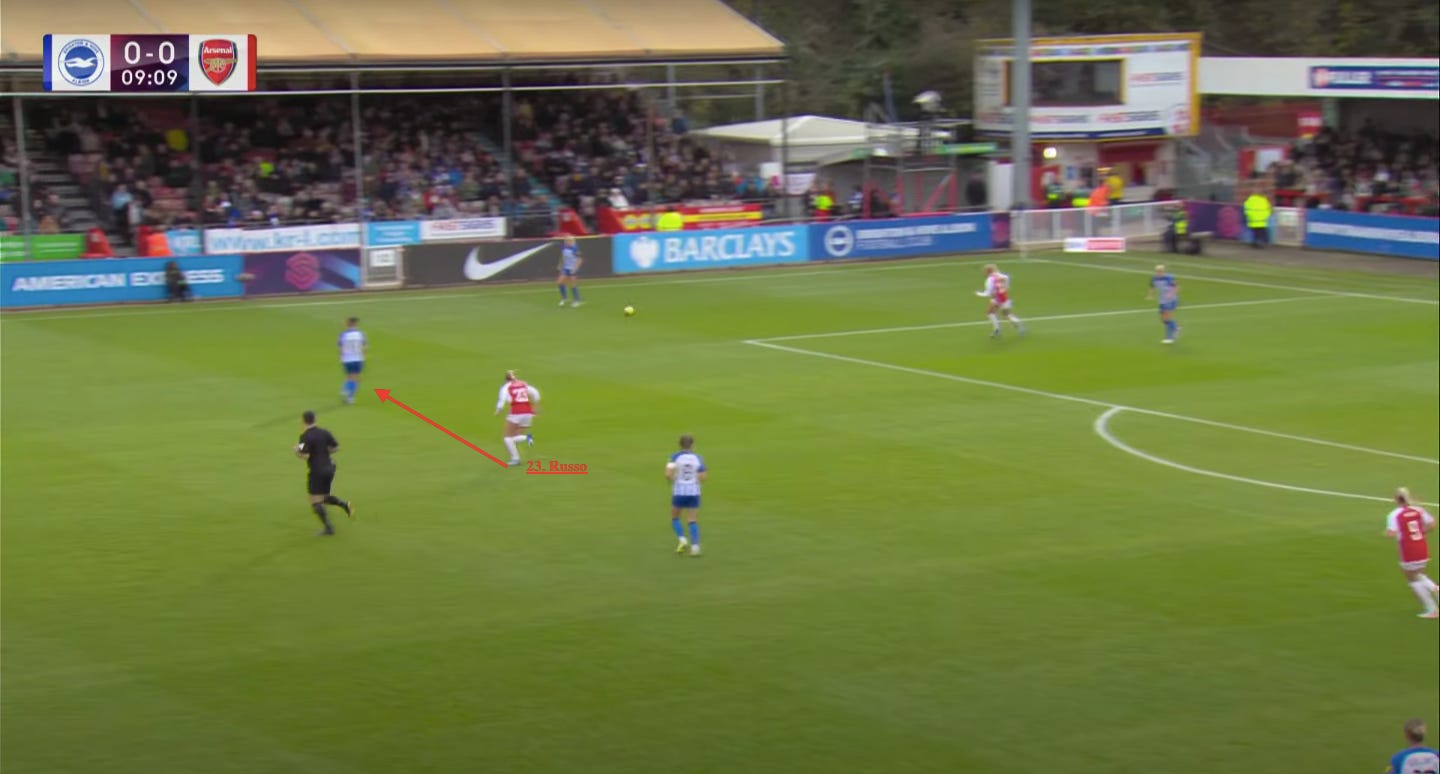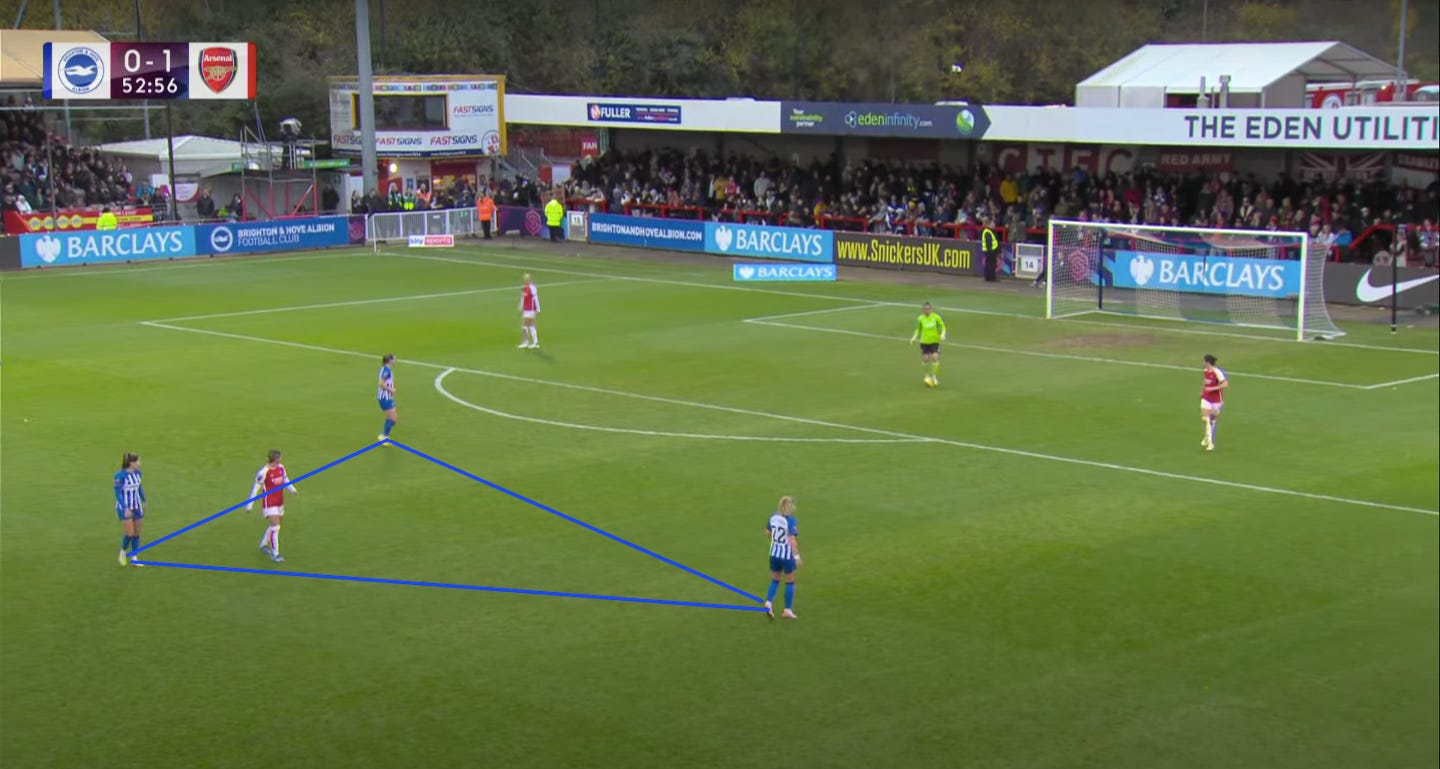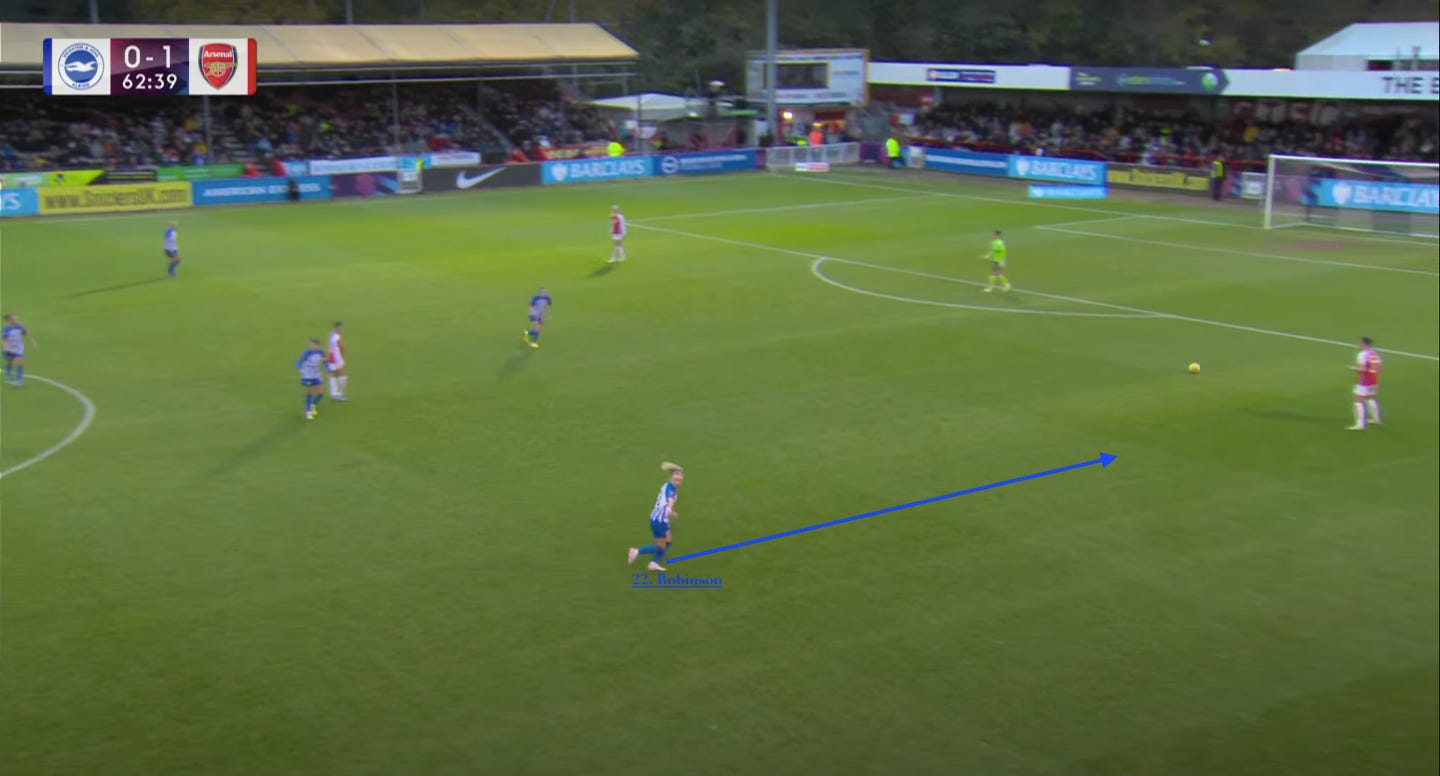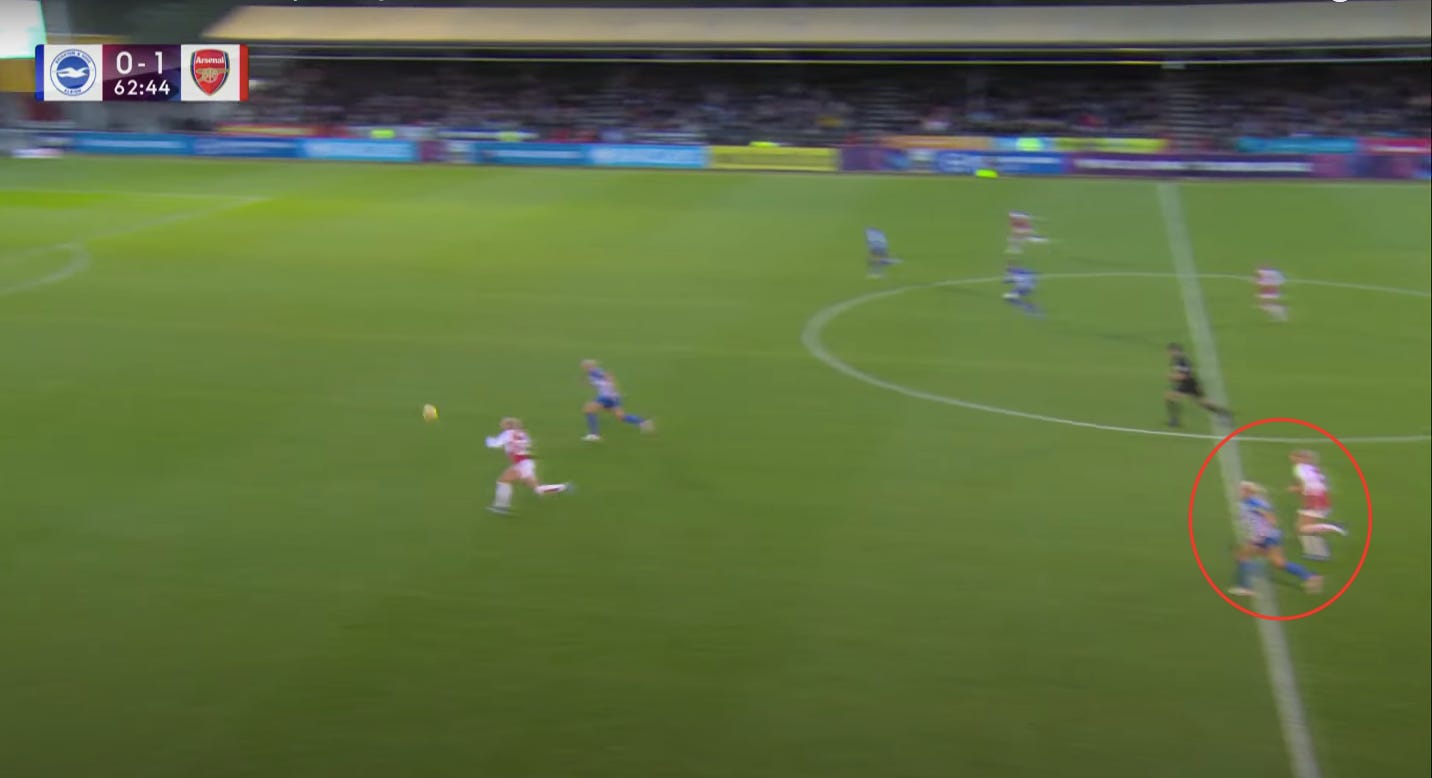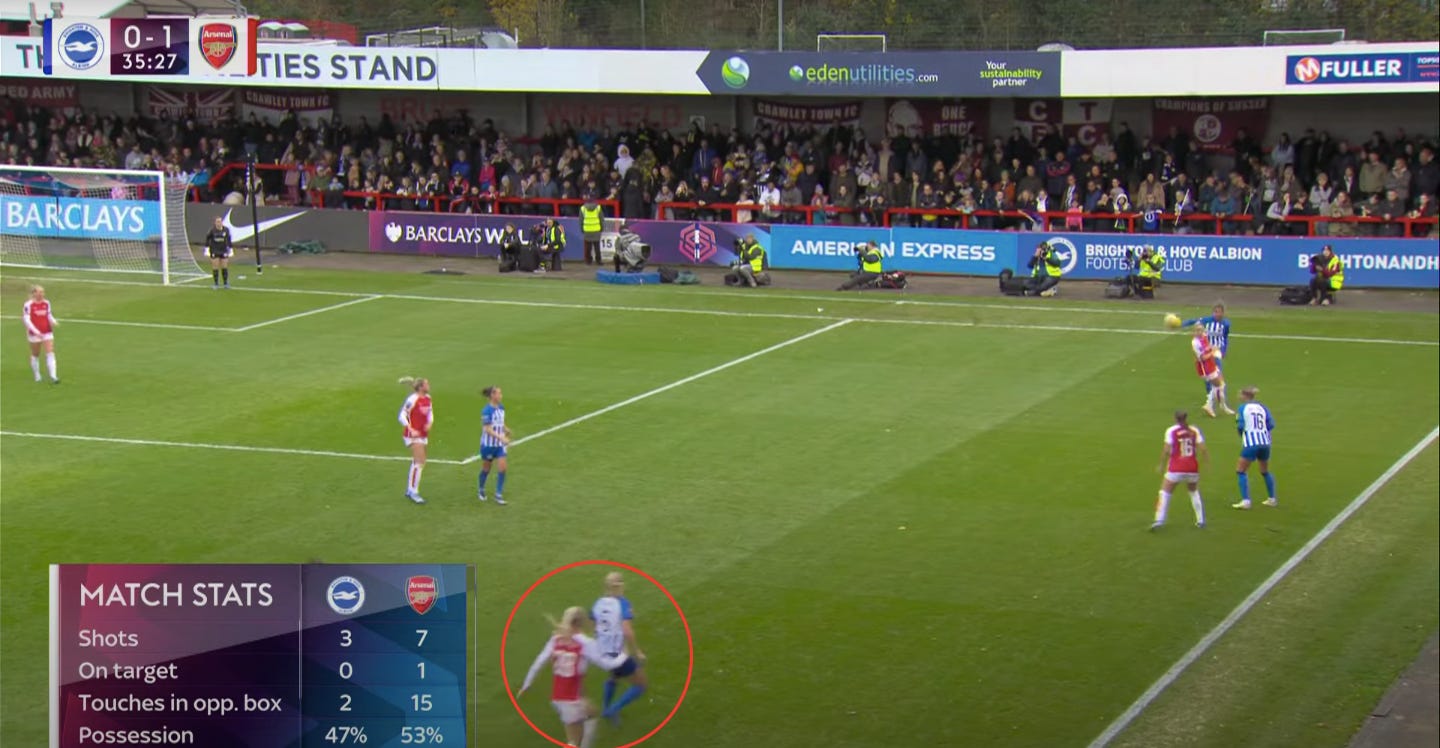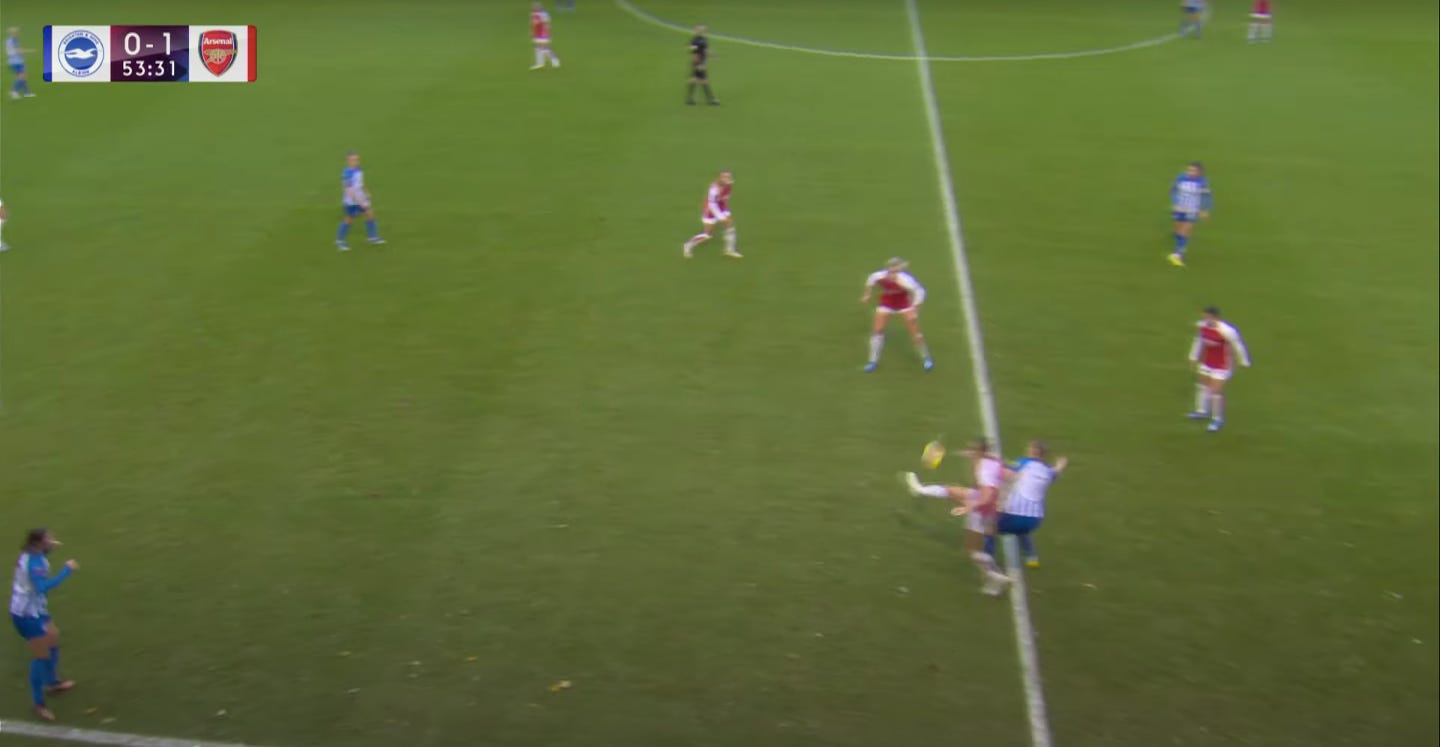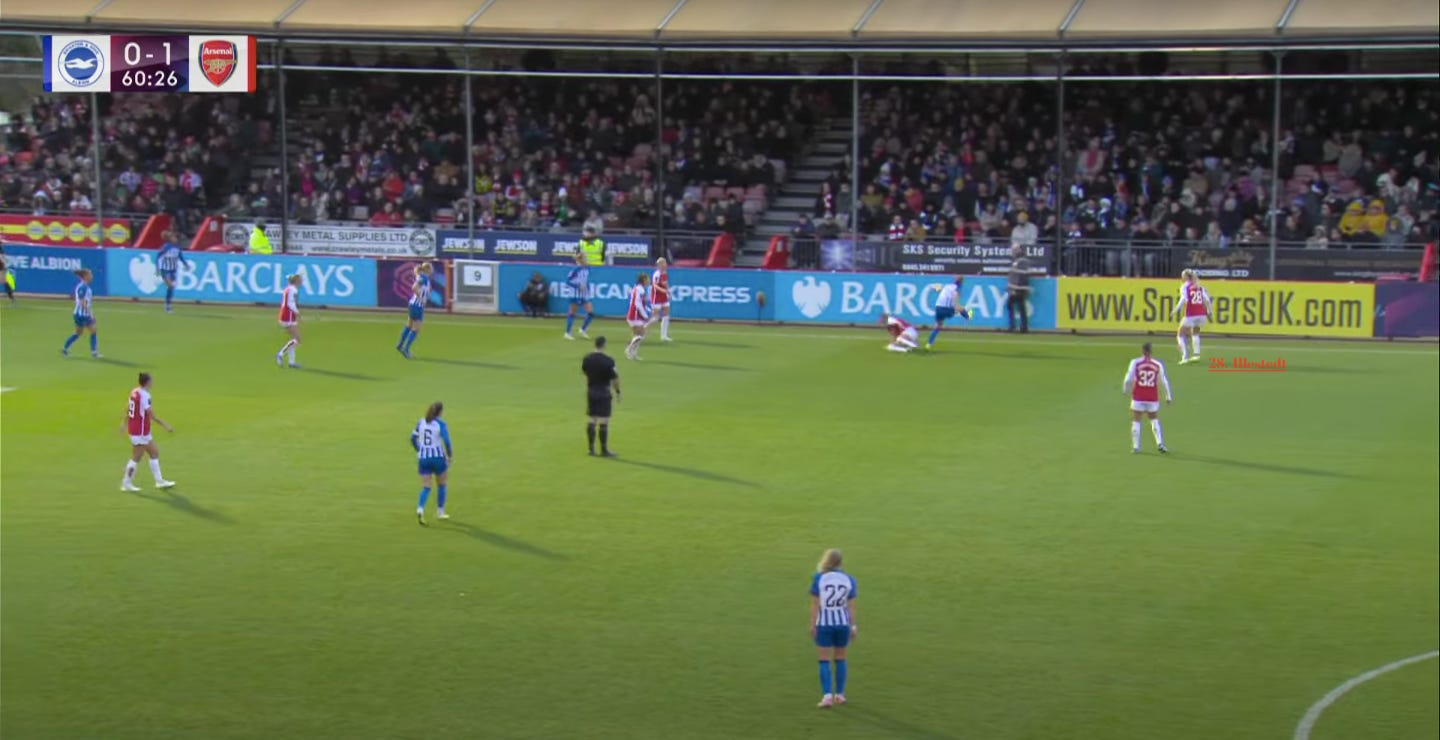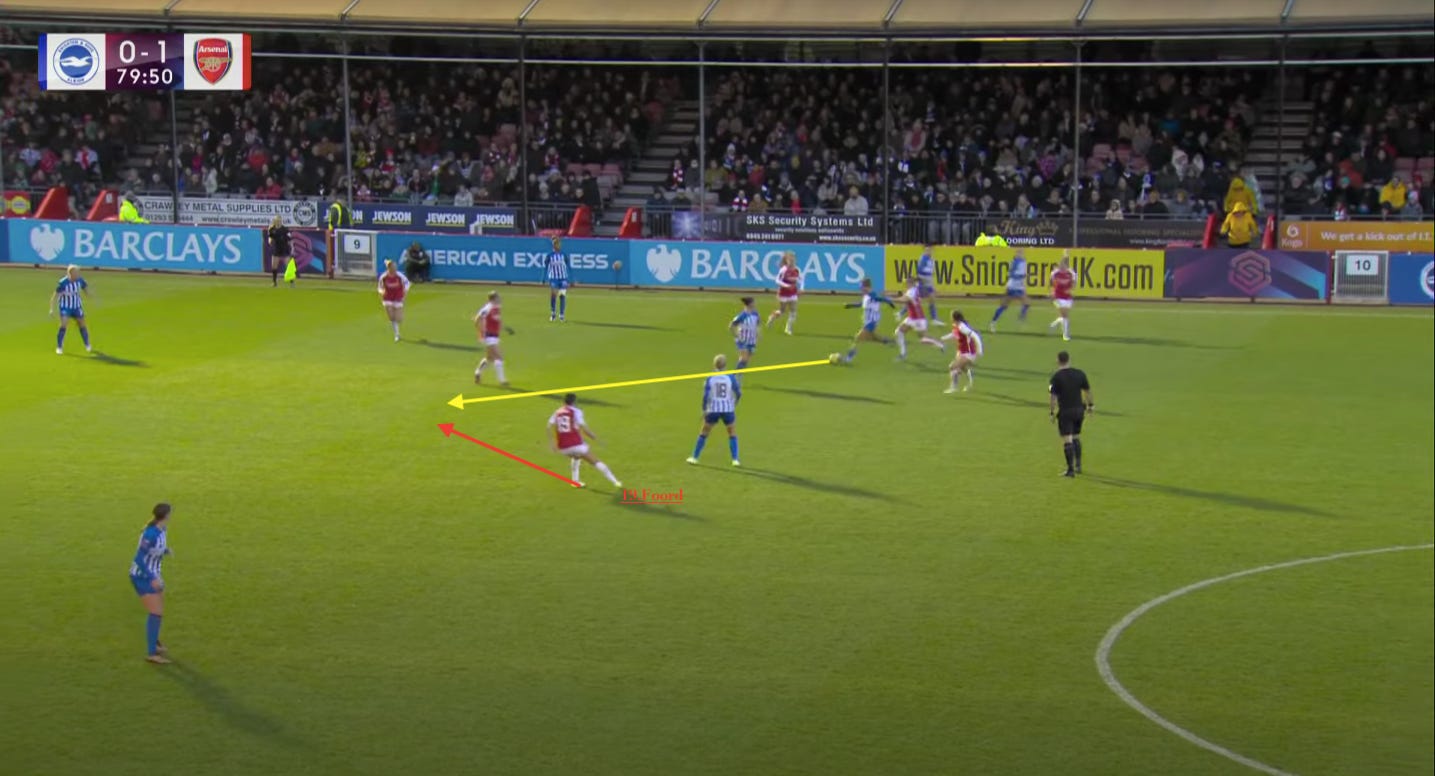Brighton Women vs Arsenal Women: Tactical Analysis
Last Sunday, Arsenal made it five in a row in the WSL after they came through a stern test against a Brighton side who had taken points from both Manchester clubs in their previous two games. Since the international break, Arsenal's league games have followed a recurring pattern in which they have initially been unsettled by an aspect of the opposition's gameplan before making the necessary tactical tweaks in order to remedy this to good effect. Against City, they struggled against Gareth Taylor's side's high press in the early stages of the game before taking more direct approach in build-up and turning the game into one which emphasised winning the first and second balls. Against Leicester, the foxes were able to exploit Arsenal's right hand side by quickly moving the ball from one side of the pitch to the other to create wide overloads, and it took the gunners until the halftime break to adapt their approach in order to make the most of the acres of space available to them (and make the most they did, turning a 2-0 deficit into a 6-0 victory).
The Brighton game followed a similar pattern. First, Arsenal’s opponents posed a problem, then, the Gunners found a solution.
The Problems
For much of the first half this was an end-to-end game that looked to have slipped from Arsenal's control. There were two primary reasons for this. Firstly, Arsenal were too passive in possession and Brighton were able to build from the back time and again. Secondly, Albion did a good job of preventing Arsenal from playing out themselves. Let’s begin by looking at how Arsenal’s out of possession shape game was exploited by their opponents.
In the frame below, Carabalí is being pressed by Mead while Russo and Blackstenius (both circled) are well positioned to stop passes into central midfielder Losada and central defender Thorisdóttir, however, a passing lane to right-centre-back Bergsvand is left open with Foord man marking Olme.
As a result of Foord being dragged inside the pitch, Bergsvand is able to play a simple pass to Li (out of shot), who is ready to receive the ball on the touchline.
With Li now finding herself in plenty of space, Cooney-Cross is dragged across to plug the gap, which in turn leaves Olme free to receive the ball in the middle of the park, and just like that, Brighton have been the Arsenal press with minimal fuss.
A few minutes later, Arsenal adapt their shape to prevent the Brighton playing an easy ball out to the touchline, but this time the Seagulls simply opt to carve through the middle of their opponents. Blackstenius is unable to bend her run enough to block a ball out Bergsvand, who is hugging the touchline. As she carries the ball forward, Russo tracks Olme to block the pass into midfield.
With Foord camped out wide, both of Bergsvand’s passing options are cut off, so the Norwegian takes the initiative and simply drives into the space in between Foord and Russo before poking a ball through on the halfway line, and just like that, Brighton have created an artificial transition.
As the half went on, Brighton grew in confidence in their ability to effectively manipulate the Arsenal press to their advantage. When Bergsvand receives the ball, Arsenal are settled in a 424 mid-block.
At this point, Arsenal are adopting a passive out of possession approach, Mead doesn't press, nor does she cut off the passing lane into Losada, who is positioned to receive the ball from within the Arsenal block.
After receiving the pass from Carabalí, Losada plays the ball back to Thorisdóttir, who drags the Arsenal forward line up with her in in the process. Note the distance between Blackstenius and Thorisdóttir.
At this point, Arsenal are caught in between a rock and a hard place, they are playing with a higher line but the distance between Blackstenius' starting position and Thorisdóttir is too great for the Swede to adequately put pressure on the ball, so the Brighton centre-half has time to pick out a pin-point ball for right-wing-back Li, exploiting the chasm of space that has opened up between left-winger Foord and left-back McCabe.
While Brighton smoothly bypassed Arsenal press, they also stifled Eidevall’s side when they were trying to build from the back. Three times in under two minutes, between 26:08 and 28:01, Brighton’s clogging up of the middle forces the gunners long. The image below is illustrative of the issue Arsenal faced, with Brighton cutting off access to Cooney-Cross.
When Arsenal did try to play, they got themselves into trouble. As Zinsberger is about to play a ball into to Pelova, the Dutchwoman is being tracked by Losada.
And she is pushed back towards the edge of her own penalty-area, Cooney-Cross is surrounded by Brighton players as the home side look to prevent Arsenal from playing centrally, which leaves Wubben-Moy as the only passing option available to Pelova.
With Robinson applying pressure as Wubben-Moy receives the ball, Pelova makes an intelligent off-the-ball movement (in my opinion, knowing where to be at the right time is one of her greatest strengths) into the space vacated by the right-winger. Having to thread an eye-of-the-needle pass, Wubben-Moy gets her execution slightly wrong, Pelova miscontrols, and Brighton have turned the ball over in a dangerous position.
As the first half wore on it became a game of duels, with Arsenal often unable to pass their way out of Brighton pressure. In the sequence below Zinsberger makes the most of open passing lane into midfield and passes the ball to Cooney-Cross, but the Australian attracts the close attention of Terland, and play the ball back to Illestedt.
With limited options available, Arsenal’s no.28 plays a lofted pass to the out of shot Mead, and now Arsenal’s success in playing out depends entirely on the winning of their duels.
The Solutions
In the second half, Arsenal did a much better job of manipulating the Brighton press and exploiting gaps that opened up. We see an early example of this in the second 45 from a thrown-in situation. After a quick through from Maritz, Pelova is able to turn her marker and move into space towards the centre of the pitch, and as Losada goes to close her down, Cooney-Cross is left open in middle, while Russo (top of frame) makes herself available for a wall-pass.
Russo duly plays a first-time ball to Cooney-Cross, who can now drive through the heart of the Brighton midfield. Arsenal lose the ball further up the pitch, which leads to a dangerous Brighton attack, but it shows greater intent on Arsenal’s part to play out of pressure when possible.
The next time Arsenal try to build up, Brighton adopt a narrow shape. Robinson and Terland are blocking passes into midfield while Losada is man-marking Cooney-Cross.
With no progressive pass on, Wubben-Moy elects to dribble out, pinning Robinson in a narrow position, and this in turn allows McCabe, who is left in plenty of space out wide, to advance up the pitch and receive the pass from her central defender.
If all else failed, Arsenal were not afraid to go over the top of the Brighton block. In the frame below, Robinson can be seen ushering the out of shot Rule to push up while she applies pressure on Wubben-Moy.
With the Brighton line pushed up, Russo (circled) pins Thorisdóttir on the halfway line, opening up space for Blackstenius to get on the end of Wubben-Moy’s long pass and in behind the Albion defence.
While Arsenal improved on the ball in the second half, it was the increased intensity of their pressing, doing so in greater numbers and with a higher line, that was most crucial in reasserting control of the game and eventually turning a 1-0 scoreline into 3-0.
In the sequence below, Mead and Blackstenius are positioned aggressively to try and force Brighton wide, while Russo is tracking Olme should Brighton go through the middle. Also note the high position of right-back Maritz. When Olme receives the ball, Russo applies the pressure, leaving the Brighton midfielder with no option but to pass to Caribalí in the left-back position.
This is the trigger for Mead to apply pressure, but it is the final frame that is most illustrative of Arsenal’s agressive intent here. Central defender Illestedt (bottom of frame) has followed Brighton’s Bremer into her own half, where the Swede wins her arial duel and forces a high turnover.
The above sequence set the tone with regard to Arsenal’s off-the-ball approach in the second half, in fact, it is practically mirrored early in the second period. Once again, a ball from goalkeeper Baggaley into midfield triggers pressure from Russo, and by extension Mead, as the ball is inevitably funnelled into the left-back position.
This leads a scuffed forward pass from Kullberg, and Pelova is able to regain possession for Arsenal. Note that Bremer has once again attracted the close attention of Illestedt, who has followed the German into her own half.
A few minutes later, the Swede is at it again, though this time, she commits a foul in the Brighton half.
Arsenal were also able to force turnovers time and again from Brighton throw-ins inside their own half. As Rule takes the throw-in below, Arsenal have three-players aggressively positioned, and are able to force a quick turnover.
On the other side of the pitch, we can clearly see Russo and Mead acting as blockers while Pelova tracks Bremer, with Maritz behind, ready to pick up on any loose ball. In the second frame, we see Illestedt in that high position again as Maritz is felled.
These were warning signs for Brighton, and Arsenal were eventually able to punish them in the harshest possible way. This time, Brighton are eventually able to win the second ball, but Foord, who’s central position is a result of Arsenal trying to squeeze the amount of space available to Brighton, is able to anticipate the ball into midfield and can intercept thanks to her starting position.
Of course, she still has to produce an excellent finish after this, and you could probably point the finger at Bergsvand’s passive defending, but it was no coincidence that Arsenal were able to force a turnover in a dangerous position from an Brighton throw. As was the case against both Manchester City and Leicester City, Jonas Eidevall and his team showed their ability to problem solve in-game to great effect.









